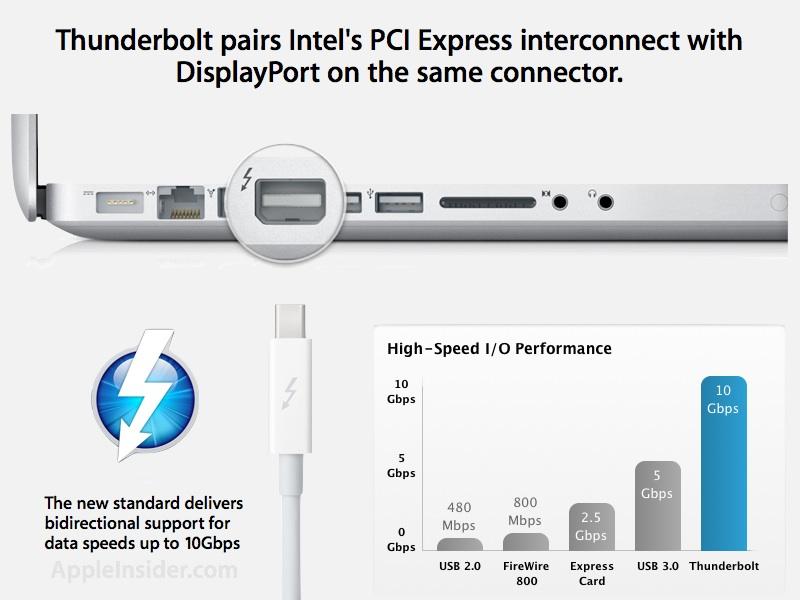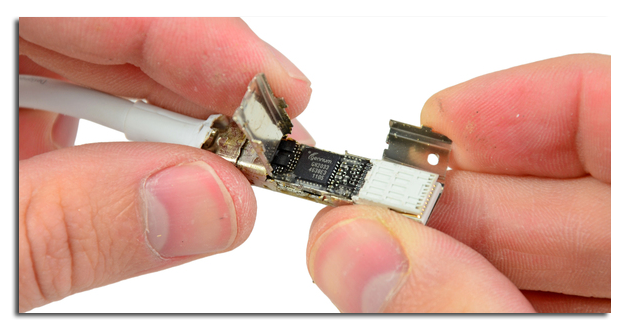The world's largest chipmaker issued a statement on Monday confirming its plans to release the new cables this year, IDG News Service reports. Current Thunderbolt cables utilize copper with a maximum effective length of six meters.
Intel spokesman Dave Salvador told the publication that optical cables will support data transfers over distances of tens of meters. As the technology develops, they will also make broader bandwidth a possibility. However, one downside to the optical cables is that connected devices will require their own power supplies.
The current generation of copper Thunderbolt cables can provide up to 10 watts of power, but power over longer optical cables would suffer from an "impedance-induced power drop," according to the report.
Intel declined to provide more detailed timing on when the new cables will arrive and how much they will cost. First-generation Thunderbolt ports will, however, be compatible with the new optical cables.
Last week, the chipmaker indicated that it intends to support the PCI-Express 3.0 protocol. Thunderbolt currently works with PCI-Express 2.0 technology. PCIe 3.0 is capable of moving data at 8 giga transfers per second, a step up from the 5 gigatransfers per second speed of PCIe 2.0.
Intel and Apple released Thunderbolt little more than a year ago with the unveiling of the Early 2011 MacBook Pro. The technology couples Intel's work on a "Light Peak" optical connector with Apple's Mini DisplayPort standard to achieve two channels of 10Gbps transfers in both directions, simultaneously.
Apple added Thunderbolt to most of its Mac lineup throughout 2011. Available Thunderbolt accessories have remained relatively sparse, though. The company released a Thunderbolt Display last July and several external drive options (1, 2) exist for the technology.
Apple's official $49 Thunderbolt cable was released last June. It measures 2 meters in length and can connect two Thunderbolt-equipped Macs. A subsequent teardown of the cable revealed that it implements transceivers at either end of the cable to improve reliability when transferring data at high speeds.
PC makers are expected to introduce Thunderbolt-equipped Ultrabooks in the second quarter of this year. Acer, Asustek and Lenovo and been named as vendors interested in implementing the I/O. Lenovo has already announced Thunderbolt-equipped Thinkpad laptops that will be released later this year.
 Josh Ong
Josh Ong








-m.jpg)






 Christine McKee
Christine McKee
 Charles Martin
Charles Martin
 Mike Wuerthele
Mike Wuerthele
 Marko Zivkovic
Marko Zivkovic
 Malcolm Owen
Malcolm Owen


 William Gallagher
William Gallagher

-m.jpg)






32 Comments
This is where you can stick this idea!
Seems Like it took forever for USB 3 to be integrated into PC's. USB 2 was the standard forever. Now that Intel and Apple have released the Thunder Bolt interface it seems better than USB 3 but I wonder how integrated it will be in a year. How many external Hard Drives will come with the interface compared to USB 3?
Seems Like it took forever for USB 3 to be integrated into PC's. USB 2 was the standard forever. Now that Intel and Apple have released the Thunder Bolt interface it seems better than USB 3 but I wonder how integrated it will be in a year. How many external Hard Drives will come with the interface compared to USB 3?
Thunderbolt and USB 3.0 will be integrated into Ivy Bridge due out shortly. That's a plus, except that AMD and ARM can't support Thunderbolt. Still, not a big deal as Intel dominates the PC market. Plus USB and Thunderbolt don't really compete too much, especially not for an optical version of Thunderbolt. I will be surprised if Apple doesn't include USB 3.0 in their Ivy Bridge Macs.
Whatever happened to I esata taking over external hard drives?
USB 2 was the standard forever.
Especially when most of the products were actually USB 1.1 being marketed as 2.0.